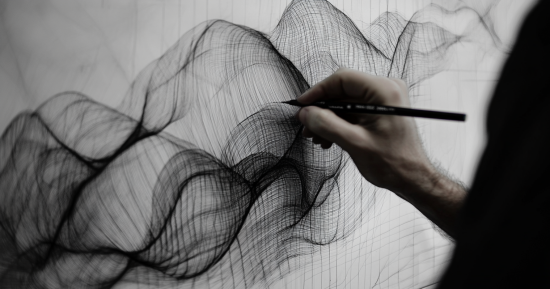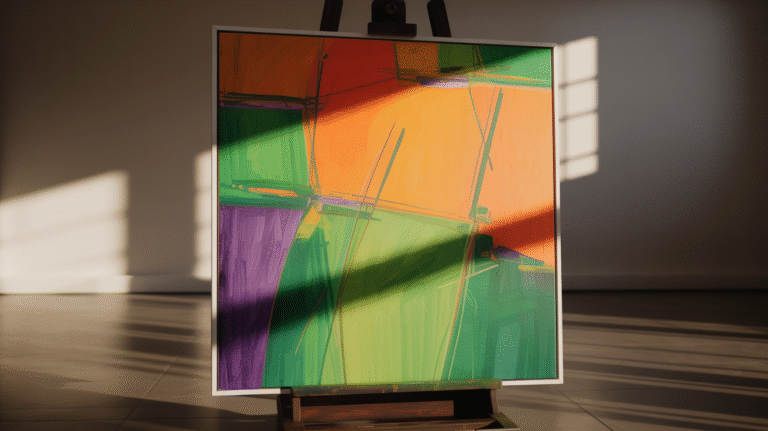In the realm of artistic expression, contour lines play a crucial role in creating two-dimensional renderings of three-dimensional objects and scenes. This drawing technique focuses mainly on the fundamental structure of a subject, leaving out details and shading. The term “contour,” which comes from the French word for “outline,” emphasizes the importance of capturing the essence of a subject through its shape, structure, and surface characteristics.
Understanding Contour Lines
Derived from this fundamental concept, contour line art involves sketching the style of a subject by drawing lines that result in an outline. This approach allows artists to emphasize the most important features of their subjects while simplifying complex scenes. Contour lines serve as the building blocks of drawing, providing a powerful tool for expression through the use of simple, yet meaningful lines.
In addition, contour drawing helps artists develop observational skills, visual memory, and hand-eye coordination, making it an invaluable practice for artists of all levels. Whether focusing on a minimalistic approach or integrating contour lines with other drawing techniques, artists can creatively incorporate contours to enhance the overall impact of their artwork.
Definition and Purpose

Contour lines in art are essential elements that define the edges of a form or shape. These lines create depth and structure in artwork, acting as a fundamental building block for art forms such as painting, sculpture, and graphic design. A contour line drawing is a drawing method where only the outline of an object is depicted, without any shading involved. The purpose of contour lines in art is to accurately represent an object’s shape and form while emphasizing its boundaries and significant internal lines.
Types of Contour Lines
There are two main types of contour lines in art:
- Outer Contour Lines: These lines define the external boundaries of an object. For example, when drawing a pear, an artist would draw the outline of the pear and include the stem, creating an outer contour line.
- Internal Contour Lines: These lines represent the significant internal features of an object. While outlining the general shape, artists may also include relevant details within the object, such as the folds of fabric or the lines on a leaf.
The use of contour lines in art allows artists to effectively communicate the structure of an object on a two-dimensional surface. By incorporating both outer and internal contour lines, artists can create more detailed and accurate representations of objects in their artwork.
The Role of Contour Lines in Composition
Contour lines play a crucial role in the composition of an artwork. They are used to define the edges of forms or shapes and provide a sense of depth and structure to a piece. This section will explore how contour lines can be utilized to create depth, dimension, and guide the viewer’s eye through the composition.
Creating Depth and Dimension
In a flat artwork, contour lines contribute significantly to the illusion of depth and perspective. This is achieved by varying the quality of the lines, such as their thickness or thinness. For example, thicker lines tend to appear closer to the viewer, while thinner lines give the impression of being farther away. This technique is called line weight.
Moreover, artists can manipulate contour lines to create a sense of form and volume in their artwork. By using overlapping lines, they can emphasize the three-dimensional aspect of the subject. Also, using contour lines to cross-hatch or shade a section of the composition can enhance the sensation of depth and texture.
Guiding the Viewer’s Eye

Contour lines are not only useful for giving an artwork depth and dimension, but they also help to guide the viewer’s eyes throughout the piece. Line direction plays a significant part in this; artists can use contour lines to create movement and rhythm in their compositions.
For instance, by using curved lines, an artist can generate a sense of fluidity and motion, leading the viewer through the artwork. In contrast, straight lines can create a more static, structured appearance.
Here are some techniques artists use to guide the viewer’s eye with contour lines:
- Repetition: Repeating a particular line shape can create a pattern that guides the viewer’s attention through the composition.
- Contrast: The juxtaposition of different line shapes or thicknesses can draw the viewer’s eye to specific areas of the artwork.
- Direction: Lines that converge or diverge can create a sense of movement, encouraging the viewer to follow the paths created by the artist.
In summary, contour lines are a versatile and essential element in art composition. They provide depth and perspective to flat artworks, and they can guide the viewer’s eye, creating a dynamic and engaging visual experience.
Techniques for Drawing Contour Lines

Observation and Line Quality
In contour line art, the artist relies heavily on observation skills and meticulous attention to detail. By closely observing the edges of the subject matter, the artist can accurately define its form using a variety of line weights and types.
This may include bold lines for prominent features and thinner lines for subtle nuances. The variation in line quality helps add depth and character to the artwork. To practice this technique:
- Choose a subject to observe closely.
- Focus on the edges and contours of the subject.
- Use a variety of line weights and types to define the contours of the subject.
- Experiment with texture and patterns to enhance the complexity of the artwork.
Cross-Contour Lines and Shading
Cross-contour lines are lines that follow the contours of a subject, showing the form’s three-dimensional aspects. These lines can either be explicit or implied, and they work in tandem with shading techniques to bring depth to the artwork. This approach aids in bringing a realistic touch to the contour lines while enhancing the understanding of the subject’s shape. Here are some steps to follow:
- Start by drawing the outline of your subject using contour lines.
- Determine the light source in your artwork for shading purposes.
- Add cross-contour lines that follow the shape of your subject, considering the light source.
- Incorporate shading techniques where appropriate, using cross-contour lines as a guide.
Using these techniques, artists can create contour line drawings that are dynamic, expressive, and engaging. With practice and diligent observation, one can master the art of contour line drawing and develop a unique and visually appealing style. By incorporating observation and line quality, as well as cross-contour lines and shading, artists can enhance their contour drawings and produce captivating works of art.
Influential Artists

Many artists have mastered the art of contour line drawing, a fundamental technique that captures the essence of their subjects through continuous, defining lines.
This technique has been used by countless artists, from ancient masters to modern visionaries, each bringing their unique style to this fundamental drawing method.
Here are a few famous examples:
- Vincent Van Gogh’s “Starry Night” is reminiscent of a dynamic sky with its wavy contours.
- Leonardo da Vinci’s “Vitruvian Man” uses precise lines to explore human proportions.
- Pablo Picasso’s “Guernica” distorts contours to depict the chaos of war.
- Henri Matisse’s “The Red Studio” simplifies contours and merges objects with their surroundings.
- Albrecht Dürer’s “Rabbit” shows meticulous contour details and brings a small creature to life with startling realism. These artists masterfully use contour lines to create powerful visual narratives.
Contour lines continue to be a versatile tool in the artist’s repertoire, shaping the way we perceive and interpret the visual world.
Are you familiar with the contour line technique or have you already used this tool? Feel free to share your experiences in our comments.
What is contour in image?
Contour in an image is the outline that defines a shape or form, creating a boundary between the subject and its surroundings.
What is the benefits of contour drawing?
Contour drawing enhances observation skills, encourages simplicity in representation, improves hand-eye coordination, and helps artists understand a subject’s form and structure.






